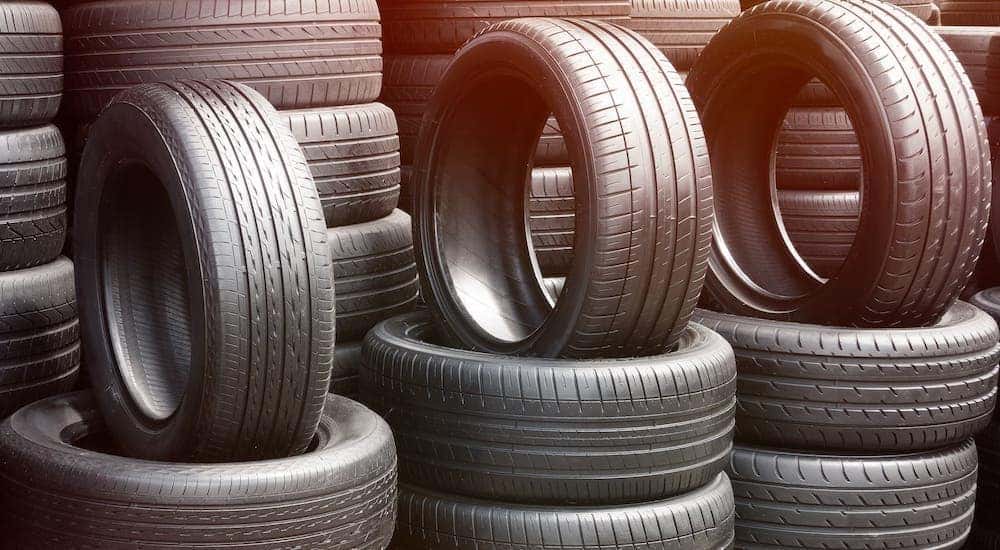Explore Exclusive Mopar Tire Service Specials in Morris Today
Wiki Article
Tire Solution: Understanding Tire Stress Surveillance Equipments
Comprehending Tire Stress Surveillance Solutions (TPMS) is an essential element of maintaining optimal car efficiency and safety on the roadway. With developments in vehicle innovation, TPMS has actually ended up being a standard function in modern-day automobiles, supplying real-time information on tire pressure levels.
Importance of TPMS
The significance of Tire Stress Surveillance Solutions (TPMS) lies in their capability to enhance car safety and security and efficiency with real-time tracking of tire pressure degrees. Preserving the appropriate tire stress is crucial for ensuring optimum handling, braking, and overall safety and security of a lorry. TPMS supplies chauffeurs with prompt responses on any type of overinflated or underinflated tires, enabling for timely changes to be made.
Components of TPMS
Comprising different essential aspects, a Tire Stress Surveillance System (TPMS) functions as an advanced safety and security attribute in modern lorries. The primary components of a TPMS include sensing units, a control module, and a warning indicator. Sensing units are normally located in the tire shutoff stem or connected to the wheel assembly, where they determine tire stress and transfer data to the control module. The control module processes this details and sets off a caution if it finds dramatically low stress in any one of the tires. The warning indicator, usually an icon on the control panel, signals the vehicle driver to examine the afflicted tire or tires. Some progressed TPMS versions additionally show the actual tire pressure analyses for each and every tire, giving vehicle drivers with real-time details to make certain optimum tire performance and safety. By checking tire stress continually, TPMS assists protect against accidents, lowers tire wear, and boosts fuel effectiveness, making it a vital part for vehicle safety and efficiency.
Sorts Of TPMS

On the various other hand, indirect TPMS depends on the vehicle's wheel speed sensing units to keep an eye on tire pressure. This system finds underinflation by contrasting the rotational speeds of the wheels. Indirect TPMS is less pricey than direct TPMS, as it makes use of existing sensors within the lorry.
While straight TPMS offers much more precise readings, indirect TPMS is less complex in design and commonly calls for much less maintenance. Both systems have their read this advantages and constraints, and the option between them commonly relies on variables such as cost, automobile make, and personal preference. Recognizing the distinctions between these 2 kinds of TPMS can assist automobile owners make notified decisions pertaining to tire maintenance my site and safety.
TPMS Maintenance Tips
Conduct routine checks on the tire pressure levels and compare them with the TPMS analyses to ensure they are constant. Throughout tire turning or replacement, make sure that the TPMS components are handled thoroughly to stop any kind of potential damage. If the TPMS cautioning light brightens on the control panel, address the issue quickly by inspecting the tire pressures and the general system for any kind of mistakes.Advantages of Appropriate Tire Stress
Preserving appropriate tire pressure, as highlighted in TPMS Upkeep Tips, is vital for enjoying the numerous advantages associated with optimal tire stress levels. Furthermore, proper tire stress guarantees even tire wear, expanding the life-span of the tires and promoting much safer driving problems. In conclusion, the Get the facts benefits of appropriate tire stress go beyond just tire longevity; they encompass improved fuel performance, boosted safety, better vehicle performance, and overall driving convenience.Final Thought
To conclude, recognizing tire stress tracking systems (TPMS) is vital for preserving optimum tire pressure and guaranteeing automobile security. By acknowledging the relevance of TPMS, being acquainted with its components, knowing the different types available, adhering to proper upkeep pointers, and realizing the advantages of preserving correct tire stress, vehicle drivers can enhance their driving experience and prolong the life-span of their tires. Proper tire pressure is vital to efficient and risk-free automobile operation.
Report this wiki page